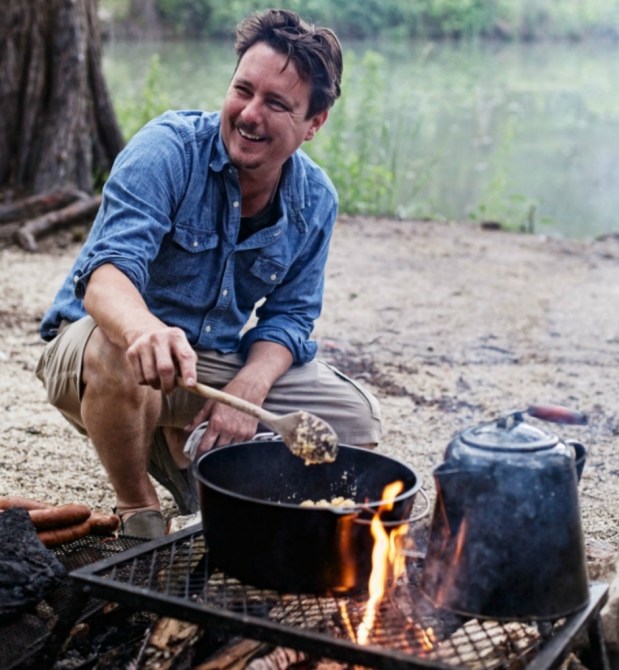After leaving the fine-dining industry, longtime chef Tim Byres spent the summer of 2009 traveling through the Mississippi Delta. “I wanted to trace the roots of American food,” Byres recalls. The trip rekindled his love for family-style eateries and old-school home cooking. When he returned to Dallas, Texas, Byres opened Smoke with a clear goal in mind. “I said I’m going to cook from scratch,” he says. “I aspired for everything to be homemade.”
From curing meat to canning jams and jellies, Byres has mastered the art of scratch cooking. And with his new cookbook, Smoke: New Firewood Cooking, he wants to show others that they can do. The Manual caught up with Byres to get a glimpse of his cookbook’s offerings.
Your cookbook is all about making food from scratch—why is it worth learning?
Nowadays, people are detached from their food. For me, knowing how to make things from scratch is exciting. It lets me have a personal relationship with the ingredients I’m working with. With the book, I wanted to demystify scratch cooking and make people say: “Wow, it’s not that hard. Who would’ve thought?” Some people think they can’t cook this way and that’s not true. If you don’t think you can’t make something, the only thing stopping you is you.
What are some tips you lay out about firewood cooking ?
In the book, I break down down the different types of wood and the importance of ash and charcoal. I also talk about how to build a fire to last a long time and to understand direct and indirect heat, the two primary methods of cooking in the book. This book will even show you how to build a smokehouse if you really want to. One thing to understand about this kind of cooking is that it isn’t so precise. There is no “set it to 350 degrees and come back in an hour.” Sometimes you’re just going to have to roll with it.
Is the book user-friendly for those who live in urban areas and don’t have access to outdoor cooking equipment?
I tried to add that smoke flavor that comes from firewood cooking in all of my recipes. So you might not have the capability to light a big fire in your backyard but you would have the capability to make the barbecue spice mixes. Take the beef spice mix with coffee, chili powder, cumin, brown sugar and smoked paprika. That’s something you can make in your kitchen, rub on a strip steak and sear on a pan. It would give you the flavor of a backyard grill.
Most of the recipes seem geared for large gatherings. Was that your intention?
All of them are meant to be shared at a huge table. With the book, I encourage family-style meals. I think it’s awesome if you can have twenty to twenty five people over, roll up your sleeves and just have a great time. That’s what I remember as a kid at my grandmother’s farm in Northern Idaho. During harvest season, everybody ate at her house–my aunts and uncles, and all of the people helping on the farm. It was like a mini restaurant. The woman would cook, then the men and the kids would show up. It was like Thanksgiving every day.
What’s something you want readers to take away from Smoke?
I would like people to take my recipes and create their own. For instance, my book has recipes for basic spices. I tested most of the spice mixes in my house and kept them jarred in my cupboard. My mother-in-law would sometimes use these spice mixes, which I intended for grilling, to make dinner. She would take a tablespoon of the poultry spice and add it to stir fried vegetables or throw it in her beans. While that’s her interpretation of that recipe, you can take that same spice and sprinkle it on a salad for a completely different dish.
Are there key tools we would definitely need before trying out your recipes?
A 12-inch cast iron sauté pan, which is great for working in a fire or even on a stove at home. Other essential tools: a charcoal chimney, a good knife and tongs. But it’s all about what you want to do. My dad used to say, “Plan your work and work your plan.” So if you want to do pickling, you’re going to need mason jars and a stockpot. I think the most essential thing is to have an open mind and just have fun.

Here’s a peek inside Smoke: New Firewood Cooking:


